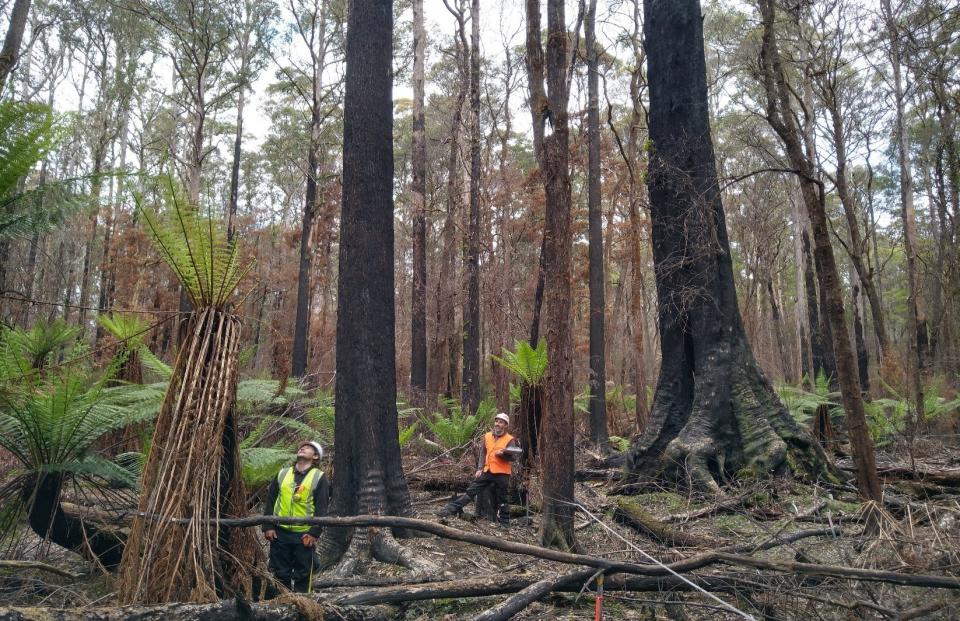
PUBLICATIONS
Published works

Using pre- and post-fire LiDAR to assess the severity of the 2019 Tasmanian bushfires: field survey methods
| Title | Using pre- and post-fire LiDAR to assess the severity of the 2019 Tasmanian bushfires: field survey methods |
| Publication Type | Report |
| Year of Publication | 2020 |
| Authors | Furlaud, JM, Foyster, S, Bowman, D |
| Document Number | 620 |
| Date Published | 10/2020 |
| Institution | Bushfire and Natural Hazards CRC |
| City | Melbourne |
| Report Number | 620 |
| Keywords | 2019 Tasmania fires, field survey method, fire severity, Lidar |
| Abstract | In January 2019, over 64,000 ha of bushland burned in the Riveaux Road fire in Tasmania's southern forests. Most of this burning occurred in tall wet eucalypt forest. These forests are considered to be highly flammable in dry conditions, but fires are infrequent due to the generally cool, wet climate in which they grow. As a result, limited data exists on the behaviour and effects of wildfire in these forests. Prior to these fires, extensive areas of these southern forests have been studied in-depth. In 2014, a large area of the forests that burned were mapped with aerial LiDAR, a remote-sensing technology that can characterise three-dimensional forest structure. Further, in 2016, detailed field-based measurements of fuel load, structure, and hazard were taken at 12 permanent plot which subsequently burned in 2019. Hence, the 2019 fires in Tasmania represent a globally-rare opportunity to characterise the severity of a large wildfire using pre-fire and post-fire data. In October 2019, the Department of Primary Industries, Parks, Water and Environment (DPIPWE) in Tasmania, along with five other BNHCRC end-users and the University of Tasmania, launched a project to do just this, using remote-sensing and field-based data to create a detailed case study of the 2019 Riveaux Rd. Fire, and to untangle the drivers of fire severity in tall wet eucalypt forests. Here, we present the Methodology this study. We took measurements at the 12 permanent plots that burned, dividing our measurements based on 2 levels of detail, based on the level of detail of the pre-fire measurements. In four plots we took ‘Level 1’ measurements, undertaking an overstorey census over 1 ha, assessing overstorey mortality. In 12 plots, we took ‘Level 2’ measurements, which involved characterising understorey phiognomy, structure fuel load, and fire hazard along 3-4 transects at each plot. For Level 1&2 measurements we also took numerous fire severity measurements, such as char height and burnt tip diameter. We also developed a ‘Level 3’ methodology of mostly qualitative fire severity indices that could be quickly conducted at many sample points across the landscape. quantifying fuel load, structure, mortality, hazard, and fire severity indices such as char height and burnt tip diameter. We also outline the next steps to be taken for this project. |
| Refereed Designation | Non-Refereed |
Published Works


